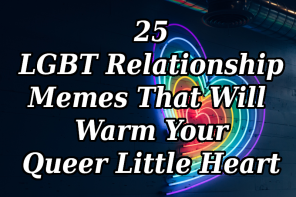The institution of marriage has been studied for decades. Researchers have delved into how marriage affects the happiness of a couple over time, what marriage does to your health and even what it can cost you over the course of your working life. Although there’s a wealth of studies and information on the effects of marriage, the scope has always been limited by the fact that couples were exclusively male and female. While some studies did include spouses who identified as bi-sexual, studies on same sex marriages were few and far between.
That’s all changing thanks to the striking down of many sodomy and sexuality laws that had previously kept LGBT couples in the shadows. Today, gay marriage is recognized in many countries all over the world as well as the majority of US States, with full federal recognition looming on the horizon. This change in the public view of gay marriage not only means the dawn of a new age of equality for LGBT couples, but also the chance for researchers to begin to understand how marriage works and its effects on a wider cross section of the public.
Initial Research and Surprising Results
When considering this kind of research the obvious question is “What purpose does it serve?” After all, it hardly takes a rocket scientist to know that being in love makes you happy and so marriage, by extension, plays a positive role for the majority of couples. But knowing that on an instinctual level isn’t the same as knowing it empirically. These studies – and those like them – set out to prove that fostering human connections is beneficial for everyone. With regards to LGBT couples, these studies also aim to put to rest the misguided notion that LGBT couples simply can’t have a marriage in the same way heterosexual couples can.
So initial research has focused on finding the common ground in marriages and long-term relationships when comparing couples from every point of the spectrum of sexuality. Studies published in the journal Developmental Psychology tracked the happiness of couples who had entered into Civil Unions in Vermont back when the state became one of the first to legally recognize these unions. The study found that, three years later, homosexual couples were just as committed as their heterosexual counterparts when it came to building and maintaining a healthy and happy marriage. In this regard there was no difference between same-sex and heterosexual couples. Later studies have found the same – LGBT couples were just as happy, if not more so, when compared to couples in heterosexual marriages and long-term relationships.
But this isn’t about who makes the “better” couple, it’s about understanding relationship, and that means taking the good with the bad. A study released in 2014 and published in the Journal of Sex and Marital therapy analyzed data from several different studies that contained details from over 30,000 couples. They found that domestic violence was just as likely to take place in a same-sex relationship as it was in a heterosexual relationship and, in some cases, even more likely to happen. There are a numbers of reasons for this surge in domestic violence among LGBT couples. First there’s the unpleasant fact that abusive relationships happen – regardless of sexual orientation. The greater chance of abuse in LGBT relationships, however, are in many ways down to the fact that these couples have been unable to get the help, resources and support they need to deal with the problem through police protection, court support and therapeutic services. After all, it wasn’t so long ago that domestic violence among heterosexual couples was so common that people routinely joked about it, and even enacted laws to protect the practice. While straight couples have been able to find help and resources in getting out of violent relationship and in getting help for offenders, LGBT couples have been left to fend for themselves and, as a result, it’s become a serious issue in the LGBT community.
Studies and research into human intimacy prove to be popular among researchers and the public. The opportunity to develop a better understanding of how we relate to one another and how those relationships affect each of us helps people to find and develop healthier and more positive relationships. It also helps researchers and medical professionals identify areas where people may be struggling or where additional education and services are needed. With more and more states adopting LGBT friendly laws, a better understanding of the LGBT community will mean better care, better support and better communication both within the community and with the rest of the world.





